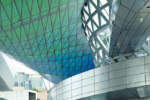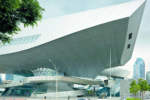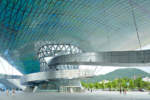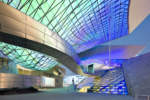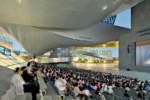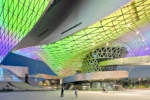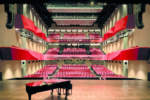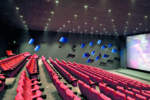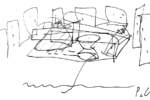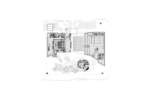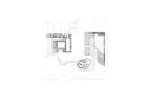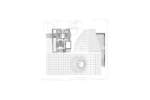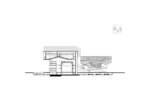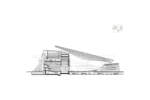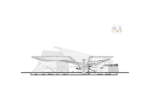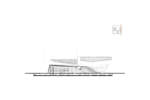architect: Coophimmelb(l)au
location: Busan, South Korea
year: 2012
The concept envisions an urban plaza of overlapping zones including an Urban Valley, a Red Carpet Zone, a Walk of Fame and the BIFF Canal Park. The urban plaza is formed by building and plaza elements sheltered by two large roofs that are enabled with computer programmed LED outdoor ceiling surfaces. The larger of the roofs includes a column-free cantilever of 85 meters over a multifunctional Memorial Court event plaza. The urban zones of the complex are formed by individual and recognizable building objects placed below the outdoor roofs. The building objects contain theater, indoor and outdoor cinemas, convention halls, office spaces, creative studios and dining areas in a mixture of sheltered and linked indoor and outdoor public spaces. The design of these spaces supports flexible, hybrid functionality that can be used both during the annual festival period and day-to-day use without interruption.
The urban zones defined by functional surfaces in plan are further articulated in a sectional dialogue between stone-clad “ground” forms of the Cinema Mountain and BIFF Hill, and the metal and LED clad “sky” elements of the roofs. The materiality of the building objects differentiates the spaces and articulates the architectural concept. Through their shape, placement and materiality, the various parts create a dynamic and informal tension between the ground and the roof.
The dynamic LED lighting surface covering the undulating ceilings of the outdoor roof canopies gives the Busan Cinema Center its symbolic and representative iconographic feature. Artistic lighting programs tailored to events of the BIFF or the Municipality of Busan can be created by visual artists and displayed across the ceiling in full motion graphics, creating a lively urban situation at night, but also visible during the day.
Imbedded in the architecture the lighting surfaces serve as a communication platform for the content of the Busan Cinema Center. Light as art, which is at the very nature of cinema, creates a unique and memorable atmosphere for the public urban plaza and architecture of the BCC. The Double Cone is the symbolic landmark entrance element to the Busan Cinema Center and serves as the connective element between the Cinema Mountain and the BIFF Hill. Designed as a steel web drum on top of a series of radial concrete fin walls, the Double Cone also is the only vertical structural support for the large cantilevered roof acting as a large, singular column.



